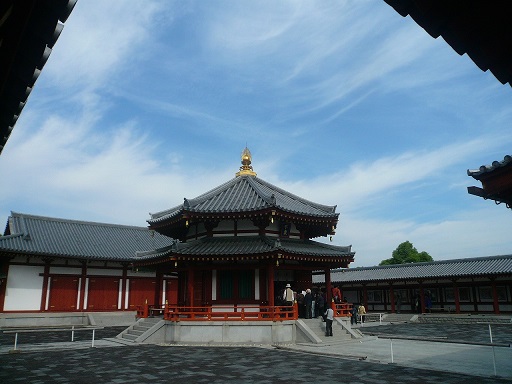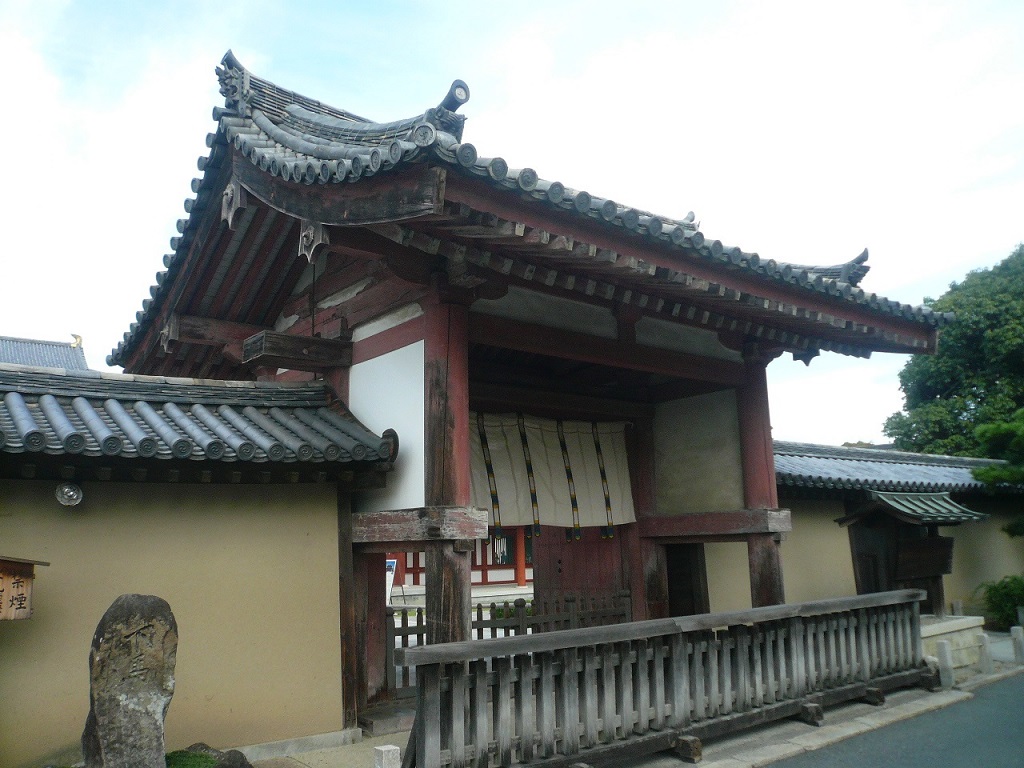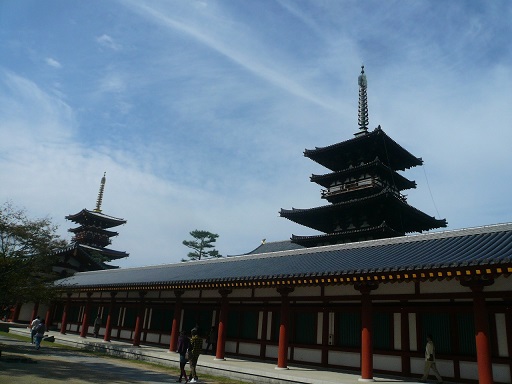On the way to Yakushiji Temple, you will see "Genjyo-Sanjyo-In Temple" on your left side.
This temple belongs to Yakushiji Temple and was built in 1991.
Genjyo-Sanjyo was a high priest of China in the seventh century. As Yakushiji Temple follows his teaching, this temple was built.
Genjyo Pagoda in Genjyo-Sanjyo-In Temple

After passing "Genjyo-Sanjyo-In Temple", you will arrive at Yakushiji Temple from the north side.
The main entrance of Yakushiji Temple is on the south side.
Yasugaoka Shrine is located to the south of Yakushiji Temple.
It was said that you need to cleanse oneself at Yasugaoka Shrine, before visiting Yakushiji Temple.
First, you will pass the South Gate.
The South Gate was rebuilt in 1512 during the Muromachi Age and is designated as an important cultural property of Japan.
South Gate

Inside of South Gate is called "Hakuho Precinct".
While the architectural style of Toshodaiji Temple is known as "Tempyo-style", representing the Nara Age, that of Yakushiji Temple is called "Hakuho-style" representing the Asuka Age.
In the "Hakuho Precinct", buildings and their layout were original from the Aska Age.
The buildings layout of Yakushiji Temple is;
- The corridor is surrounded on the periphery of the temple.
- Main Hall is located in the middle of the temple.
- Two Pagodas are located beside the main hall.
- Lecture hall is at the north center on the corridor.
When you pass the South Gate, you will see the central gate in front of you, and, you will see East and West Pagodas behind the corridor.

 Home Page in Japanese: "Shane's HomePage"
Home Page in Japanese: "Shane's HomePage"

 Home Page in Japanese: "Shane's HomePage"
Home Page in Japanese: "Shane's HomePage"